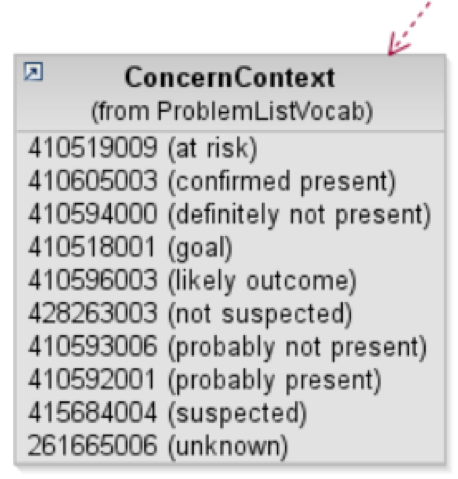Terminology modeling content, in FHIM, is scoped by the domains of interest and the target implementation specification. These are driven primarily by US realm conformance rules, both regulations and policies. The most basic level of content is identification, verification, and capture of specification requirements. For instance, for FHIM to support the generation of immunization assets, it must know the terminology bindings for the target specification, whether that be a V2 message, a CDA section, or a FHIR resource. In addition, the FHIM team worked to develop terminology content for under-specified domains. There are, for instance, tables supporting translation between V2 and V3 laboratory observation status values. Since V2 lab reporting is very mature, and there is little demand for migration, it was decided that these tables did not need to be promoted to standards. Other domains found more traction; the vital signs qualifiers and wound model value sets, for instance, are being adopted by the CIMI work on FHIR Vitals profiles.
Terminology content is sometimes illustrated as enumerations in FHIM diagrams for the reviewer’s convenience, but the properties are bound to value sets, and the FHIM provides links to terminology servers [called OID or URI in the FHIM diagrams] from which to retrieve value set contents for implementable specifications. (The diagram on this page is an example of a value set from the Problem List domain.) Pre-2010 FHIM terminology content is published in the CDC’s PHIN VADS terminology server; later work is published in the NLM’s VSAC terminology server. CIMI-adopted value sets are authored in HSPC’s SNOMED with LOINC and RxNorm extension (SOLOR) and published in the respective FHIR profiles, e.g., Vitals and Wound.

